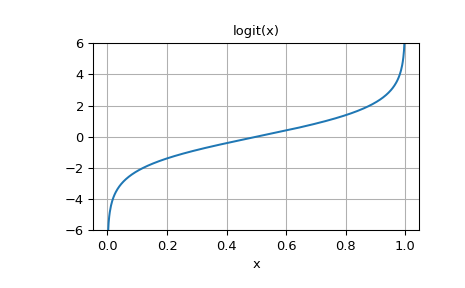scipy.special.logit — SciPy v1.16.0 Manual (original) (raw)
scipy.special.logit(x, out=None) = <ufunc 'logit'>#
Logit ufunc for ndarrays.
The logit function is defined as logit(p) = log(p/(1-p)). Note that logit(0) = -inf, logit(1) = inf, and logit(p) for p<0 or p>1 yields nan.
Parameters:
xndarray
The ndarray to apply logit to element-wise.
outndarray, optional
Optional output array for the function results
Returns:
scalar or ndarray
An ndarray of the same shape as x. Its entries are logit of the corresponding entry of x.
Notes
As a ufunc logit takes a number of optional keyword arguments. For more information see ufuncs
Added in version 0.10.0.
logit has experimental support for Python Array API Standard compatible backends in addition to NumPy. Please consider testing these features by setting an environment variable SCIPY_ARRAY_API=1 and providing CuPy, PyTorch, JAX, or Dask arrays as array arguments. The following combinations of backend and device (or other capability) are supported.
See Support for the array API standard for more information.
Examples
import numpy as np from scipy.special import logit, expit
logit([0, 0.25, 0.5, 0.75, 1]) array([ -inf, -1.09861229, 0. , 1.09861229, inf])
expit is the inverse of logit:
expit(logit([0.1, 0.75, 0.999])) array([ 0.1 , 0.75 , 0.999])
Plot logit(x) for x in [0, 1]:
import matplotlib.pyplot as plt x = np.linspace(0, 1, 501) y = logit(x) plt.plot(x, y) plt.grid() plt.ylim(-6, 6) plt.xlabel('x') plt.title('logit(x)') plt.show()
